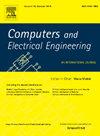A lightweight intrusion detection system using deep convolutional neural network
IF 4
3区 计算机科学
Q1 COMPUTER SCIENCE, HARDWARE & ARCHITECTURE
引用次数: 0
Abstract
Intrusion Detection Systems (IDSs) serve as critical components of cybersecurity infrastructure, safeguarding computer networks against evolving cyber threats. Recent advancements in deep learning architectures, particularly Convolutional Neural Networks (CNNs), have demonstrated substantial potential in augmenting IDS efficacy. However, conventional CNN architectures exhibit inherent limitations in processing sequential data due to their inability to capture long-term temporal dependencies. To address these operational constraints, this study proposes a lightweight deep convolutional neural network-based intrusion detection system (LWIDS-DCNN), a novel framework designed to optimize feature extraction and detection accuracy in heterogeneous network environments. The LWIDS-DCNN architecture strategically integrates convolutional layers with pooling operations and fully connected layers, forming an optimized algorithmic structure tailored for efficient extraction of discriminative features from network traffic data. The framework incorporates adaptive accelerator algorithms and dynamic learning rate optimization strategies to ensure accelerated convergence rates while maintaining training stability. Empirical validation was conducted using three benchmark datasets: CICIDS2017, CICIoMT2024, and InSDN. The proposed model achieved state-of-the-art detection accuracy, with results exceeding 99.93% on CICIDS2017, 99.70% on CICIoMT2024, and 99.97% on InSDN. A comprehensive comparative analysis against existing methodologies demonstrated LWIDS-DCNN’s superiority across key performance metrics, including precision, recall, F1-score, and loss rate. Notably, the system’s lightweight design ensures computational efficiency without compromising detection robustness, making it particularly suitable for resource-constrained environments. This work contributes to the advancement of network security research by introducing a scalable, high-performance IDS architecture capable of addressing the unique challenges posed by traditional networks, IoMT ecosystems, and SDN infrastructures. The LWIDS-DCNN framework establishes a foundational paradigm for real-time intrusion detection in converged environments, offering a robust, lightweight solution that addresses the unique intrusion detection requirements of emerging IoT and SDN systems.
基于深度卷积神经网络的轻量级入侵检测系统
入侵检测系统(ids)作为网络安全基础设施的关键组成部分,保护计算机网络免受不断发展的网络威胁。深度学习架构的最新进展,特别是卷积神经网络(cnn),已经证明了增强IDS功效的巨大潜力。然而,传统的CNN架构在处理顺序数据时表现出固有的局限性,因为它们无法捕获长期的时间依赖性。为了解决这些操作限制,本研究提出了一种轻量级的基于深度卷积神经网络的入侵检测系统(LWIDS-DCNN),这是一种新的框架,旨在优化异构网络环境下的特征提取和检测精度。LWIDS-DCNN架构将卷积层与池化操作和全连接层战略性地集成在一起,形成了一种优化的算法结构,可以有效地从网络流量数据中提取判别特征。该框架结合了自适应加速算法和动态学习率优化策略,在保持训练稳定性的同时保证了更快的收敛速度。使用CICIDS2017、CICIoMT2024和InSDN三个基准数据集进行实证验证。该模型达到了最先进的检测精度,在CICIDS2017上的结果超过99.93%,在CICIoMT2024上的结果超过99.70%,在InSDN上的结果超过99.97%。与现有方法的综合比较分析表明,LWIDS-DCNN在关键性能指标上具有优势,包括精度、召回率、f1分数和损失率。值得注意的是,该系统的轻量化设计确保了计算效率,而不会影响检测的鲁棒性,使其特别适合资源受限的环境。这项工作通过引入一种可扩展的高性能IDS架构,能够解决传统网络、IoMT生态系统和SDN基础设施带来的独特挑战,有助于推进网络安全研究。LWIDS-DCNN框架为融合环境中的实时入侵检测建立了一个基础范例,提供了一个强大、轻量级的解决方案,可满足新兴物联网和SDN系统的独特入侵检测需求。
本文章由计算机程序翻译,如有差异,请以英文原文为准。
求助全文
约1分钟内获得全文
求助全文
来源期刊

Computers & Electrical Engineering
工程技术-工程:电子与电气
CiteScore
9.20
自引率
7.00%
发文量
661
审稿时长
47 days
期刊介绍:
The impact of computers has nowhere been more revolutionary than in electrical engineering. The design, analysis, and operation of electrical and electronic systems are now dominated by computers, a transformation that has been motivated by the natural ease of interface between computers and electrical systems, and the promise of spectacular improvements in speed and efficiency.
Published since 1973, Computers & Electrical Engineering provides rapid publication of topical research into the integration of computer technology and computational techniques with electrical and electronic systems. The journal publishes papers featuring novel implementations of computers and computational techniques in areas like signal and image processing, high-performance computing, parallel processing, and communications. Special attention will be paid to papers describing innovative architectures, algorithms, and software tools.
 求助内容:
求助内容: 应助结果提醒方式:
应助结果提醒方式:


